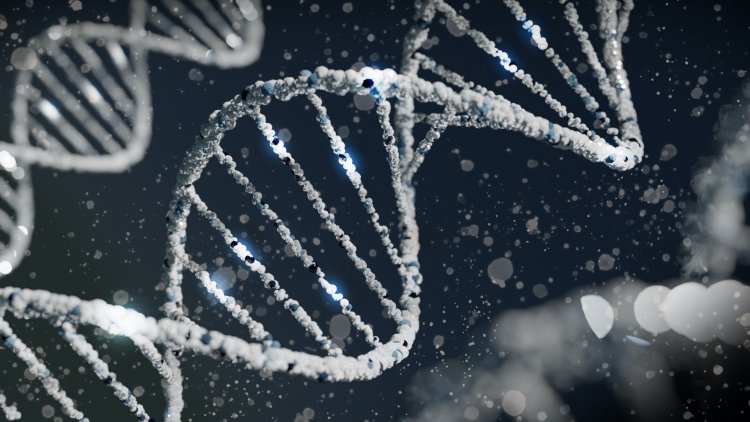In 1951, James Watson and Francis Crick began working together at the University of Cambridge. The world had already learned about the existence of DNA and its approximate composition. Scientists understood that the DNA molecule consists of four fragments combined with sugar and phosphoric acid, equal amounts of adenine and thymine, as well as guanine and cytosine. However, its structure was unknown. James Watson and Francis Crick took up the study of this issue.
Of course, the structure and composition of DNA were of interest not only to Watson and Crick. Several groups of scientists conducted research in this area. Maurice Wilkins and Rosalind Franklin in London, Linus Pauling in California. Crick and Watson were not afraid of this very serious competition, but their first attempts were not the most successful. The first DNA model they developed consisted of three strands with phosphate compounds in the center.
The first DNA model developed by Watson and Crick consisted of three strands with phosphate islands in the middle. Rosalind Franklin ridiculed scientists who were beginning to develop this field, because she was convinced that phosphoric acid could not be in the center, but on the outside. Lawrence Bragg, who coordinated the work of scientists, prohibited them from developing this topic further. However, he soon changed his mind, and the reason for this was the scientific race. Lawrence Bragg found out that Linus Pauling created his own DNA model. According to his version, the DNA looked like a triple helix, and, importantly, the phosphate backbones in it were in the middle, as Watson and Crick suggested. The scientists resumed their research.
James Watson would come to London to talk to colleagues in this field. Rosalind Franklin denied the spiral shape of the DNA molecule, while her partner Maurice Wilkins showed Watson an X-ray – the famous Photo 51. It took 60 hours to create it. The scientist put a crystallized DNA sample into a special chamber, on which X-rays were directed. They bounced off the object onto the film and after a long time formed the outlines of a DNA molecule on the film. For James Watson, who saw the picture, the shape of the spiral was obvious. On February 21, 1953, James Watson and Francis Crick proposed a new structural model of DNA.
However, the outlines were not the only mystery that DNA posed to the scientific community. It was necessary to break down into formulas the black spots in the photo: the very “bricks” that form the base of the molecule. After studying recent literature on this topic, Watson realized that the elements are combined in pairs: adenine with thymine, cytosine with guanine, and sugar and phosphoric acid are located at the edges. This was the explanation for the equal number of substances studied in any DNA molecule. Provided that each brick has a pair, when dividing, the molecule divides in half and forms a copy with exactly the same genes.
When the London colleagues saw the results, they immediately compared them with the images and confirmed the correctness of the theory. Pauling did not see the contradictions of his triple helix theory, but over time they became obvious. In 1962, an article by Crick and Watson was published in Nature scientific journal simultaneously with the articles of Wilkins and Franklin. The scientific race turned into a joint achievement. Watson, Crick, and Wilkins were awarded the Nobel Prize, while Franklin did not have time to receive the award, as she died in 1958.
Today, genetics has turned into an incredibly promising scientific field, where, despite a large number of studies, there are still many questions and riddles. However, the discovery of the structure and composition of DNA remains a landmark event in this field.
The article is based on open sources.
Phoro: Sangharsh Lohakare / Фотобанк Unsplash






















